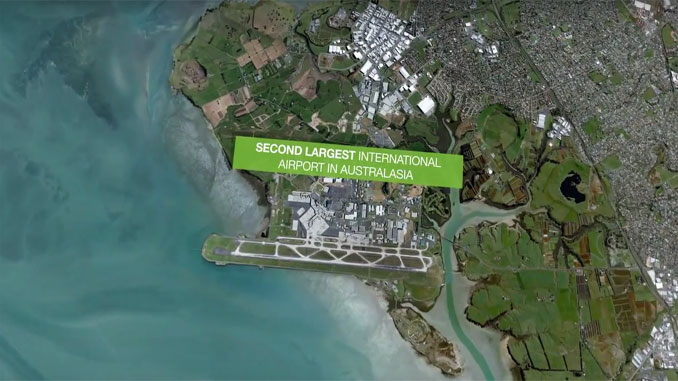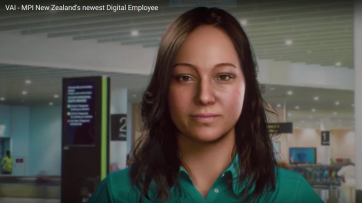Auckland Airport is using real-time intelligence on the road network to and from the airport to help it manage both passenger and traffic flow.
New Zealand’s busiest airport is enjoying ever-increasing international travel volume but that has serious implications for passenger flow and other logistics issues.
To cope with this increase, the airport set up a wide-ranging combined passenger-flow and road-traffic measurement project, to guide daily and long-term operational decisions, maximise capacity and improve flow.
To manage both passenger and traffic flow, Auckland Airport realised they needed to have a bird’s-eye view of the entire system, as well as detailed, up-close analysis of ongoing issues. They also needed a way to quickly act when things start to bottleneck.
The airport already had a mass of intelligence on passenger movement inside the terminals, thanks to their BlipTrack solution; however, they had no real-time intelligence on the road network to and from the airport.
With several traffic monitoring projects in New Zealand, using the same technology, infrastructure consultants Beca was commissioned to extend the solution across the airport’s road infrastructure. This now provides the airport with a seamless picture of traffic flow information between the airport and Auckland CBD (Central Business District, also called the city centre).
How it works
On the Road
Outside the airport, the solution measures traffic flow between the CBD and the airport, providing real-time data on reliability, vehicle counts and travel time.
It provides data about the mix of staff and passengers using the Park and Ride facility, enabling the airport to better understand the performance and regularly review how they can improve their facilities. This information is also analysed to help planning decisions for road network maintenance and infrastructure projects.
The insights, collected using a range of technologies, including radar and WiFi sensors, also helps the New Zealand Traffic Agency (NZTA) to make informed traffic management decisions, and has allowed for the implementation of a number of initiatives to improve the traffic flow to the airport. This includes optimising traffic signal timings, and combined with the recent opening of the new constructed Waterview connection, has resulted in significant travel time cuts to and from the airport from the CBD and West Auckland.
In addition, the real-time and historic BlipTrack data enables NZTA, via their new app RideMate and online, to display live travel times between the CBD and airport, as well as informing about days with high risk of congestion. This enable road users to plan ahead, reducing both the risk of passengers missing their flight and airport employees coming in late for work.
Besides the benefits of real-time reporting, the historical data is used to detect driving time anomalies. Effectively, this means that the solution can pinpoint road sections and intersections where driving times deviate from the norm as a result of construction projects, incidents, roadwork, faulty traffic lights and other factors. With this information at hand, real-time traffic management can take place.
Richard Young, Senior Associate at Beca:
“The intelligence that BlipTrack is delivering has already proved its value, by providing automated alerts on delays on vulnerable corridors, real-time counts on traffic flows and delays, and intelligence on the origin and destination of vehicle movements into the airport and to terminals and car parks.”
In the airport
Inside the airport, the solution provides metrics on passenger queue times and volume, as well as insight into passenger movement patterns throughout the international and domestic terminals´ departure and arrival processes.
This helps the airport better manage and support resources by focusing on high-demand locations and periods. Likewise, the data directly benefits passengers by displaying wait times at security checkpoints, managing passenger expectations and reducing queue-related stress.
Mark Croudace, Manager – Operations at Auckland International Airport:
“BlipTrack was a critical investment. The data has provided valuable insight into our operational performance across both our assets and processes. Most importantly, it has enabled us to have meaningful conversations with our key operational stakeholders and vendors, as we collectively seek to improve the passenger experience.”
Peter Knudsen, CEO of BLIP Systems:
“By having Auckland Airport and Beca working together, and by sharing data between multiple solutions, BlipTrack provides a solution that no other product in the industry can currently reproduce – large-scale, seamless, door-to-door movement management between different modes of transport. And because it´s not only limited to certain areas, it can be considered as one of the first real, tangible steps to true multimodal traffic management.”
BlipTrack
More than 25 international airports are using the BlipTrack technology, including:
- Amsterdam (AMS)
- Auckland (AKL)
- Billund (BLL)
- Birmingham (BHX)
- Bristol (BRS)
- Brussels (BRU)
- Christchurch (CHC)
- Copenhagen (CPH)
- Cincinnati (CVG)
- Dublin (DUB)
- Edinburgh (EDI)
- Geneva (GVA)
- Keflavik (KEF)
- Manchester (MAN)
- New York JFK T4 (JFK)
- Oslo (OSL)
- San Diego (SAN)
- Stavanger (SVG)
N.B. Image credit: Auckland International Airport







